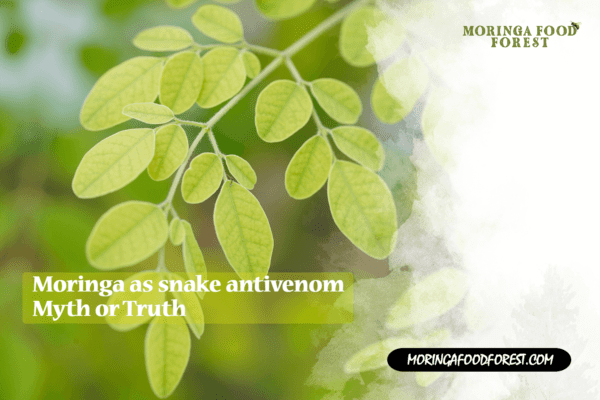
Moringa, aka the miracle tree, gives immense benefits to humans. It prevents diseases, boosts immunity, and overall helps your body heal. But does it act as an antivenom? Let’s explore about the different vertical of Moringa aka the miracle tree in this article.
Snakebite is a serious medical emergency, but it is an easily neglected issue in India. The antivenom serum therapy currently used against venomous snakebites is expensive, and the worst part is it has shown some severe side effects.
But how did snake bites were treated in ancient times? There were popular claims that Moringa oleifera was used to treat snakebite in rural India. But again, there was no solid proof to base it on.
To validate these claims scientifically, the antivenom potential of extracts of Moringa oleifera was put into investigation.
Some researchers experimented and found that Moringa oleifera has effectively neutralized several snake venom-induced toxicities.
Below we have given two interesting research done testing the two different venomous snakes against Moringa oliefera.
Study 1:
Here’s a gist of the study on Naja Haje venom(Egyptian cobra) and Moringa oleifera partitions.
45 male rats were taken and divided into nine groups.
- Group 1 was given saline.
- Groups 2 to 9 were envenomed with 0.025 mg/kg (LD50) of Naja Haje venom.
- Group 2 was left untreated.
- Group 3 was treated with polyvalent antivenom.
- Groups 4, 6, and 8 were treated with 300 mg/kg−1 N-hexane, ethyl acetate, and ethanol partitions of M. oleifera.
- Groups 5, 7, and 9 were also treated with 600 mg kg−1of the partitions.
At the research end, Ethanol extract and ethyl acetate partition of M. oleifera significantly improved hematological indices following acute anemia induced by the venom.
Besides, it also prevented hemorrhagic, hemolytic, and anticoagulant activities and reduced pro-inflammatory cytokines in the rat’s tissues.
This study concluded that Moringa Oleifera effectively against this most venomous Egyptian cobra and so can be effective against several other venomous snake bites.
Study 2:
Another research was conducted to confirm this Moringa oleifera leaf has anti-venom effects against Causus maculatus envenomation.
In this research, the ethanol leaf extract of Moringa oleifera was divided using n-hexane and ethyl acetate and tested on rats.
The venom effects of solvent fractions of M. oleifera extract against envenoming, and some biological activities of C. maculatus venom were evaluated.
Similar to the other study, Moringa prevented hemolytic and hemorrhagic activities, and the acute anemia and thrombocytopenia induced by the C. maculatus venom were reversed after treatment with ethanol and n-hexane solvent fractions of M. oleifera extract.
Isn’t this a cool reason to grow Moringa? Especially those out there in the tropics, wild, homestead, or farm. This plant can act as a first aid kit around you very close. So what else proof do you want that this social plant can be used to be treated as snake antivenom?
How flavonoid content in Moringa oleifera helps treat the snake bites?
Moringa oleifera contains a wide variety of flavonoid molecules with different nutraceutical properties. In fact, M. oleifera shows complex flavonoid glycosylation capabilities.
These flavonoids can be used as additives for treating snake bites. Because flavonoids can exert some effects when combined with antivenom, which decreases the post-therapeutic effects that can result from using antivenom.
Technically, Moringa contains flavonoids, and it does make sense why it can actively contribute to helping the antivenom work.
Final words
So with these researchers it is proved that M. oleifera possesses potent antivenom properties and it can be used for the treatment of snakebites. And you also learned that the ancient claims were true. Thanks for reading.